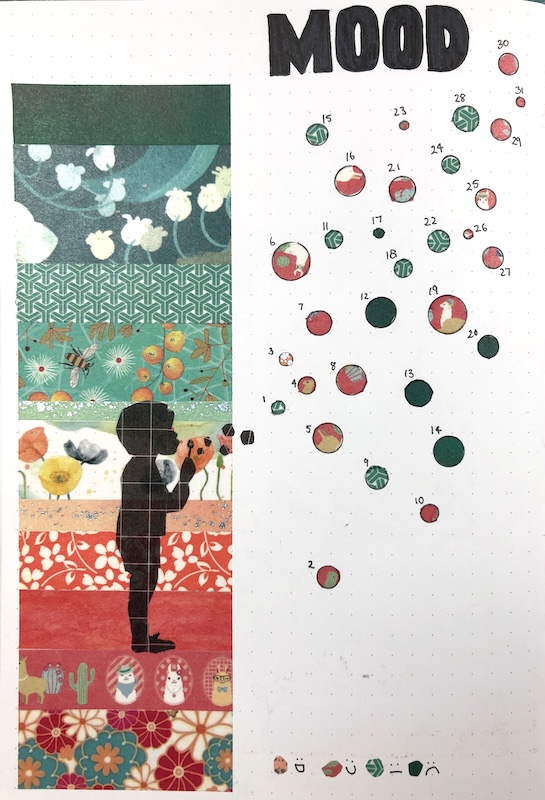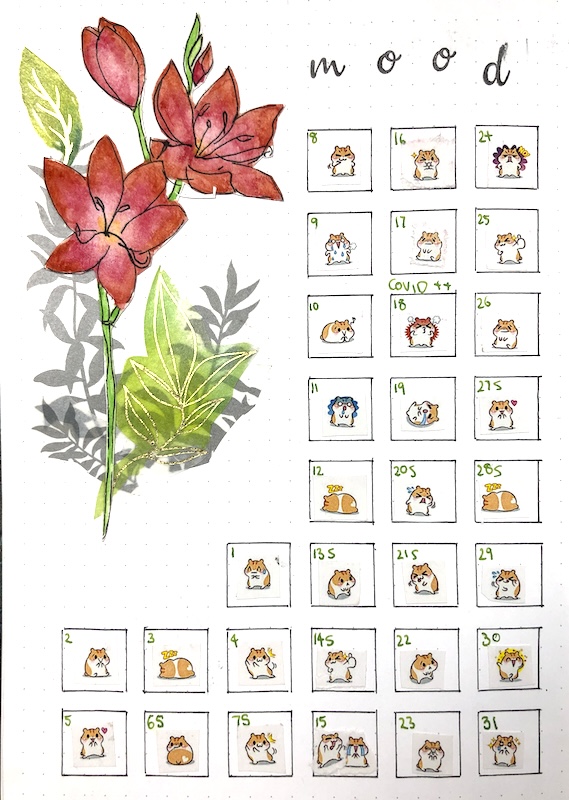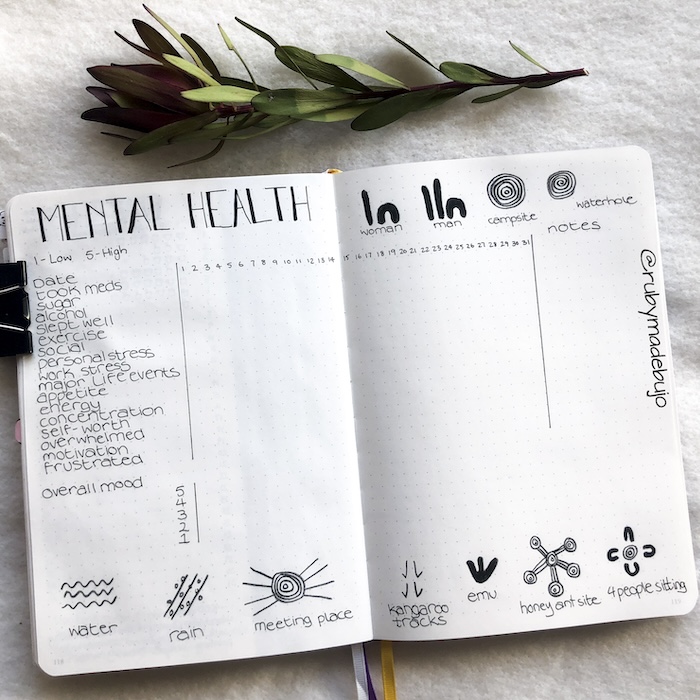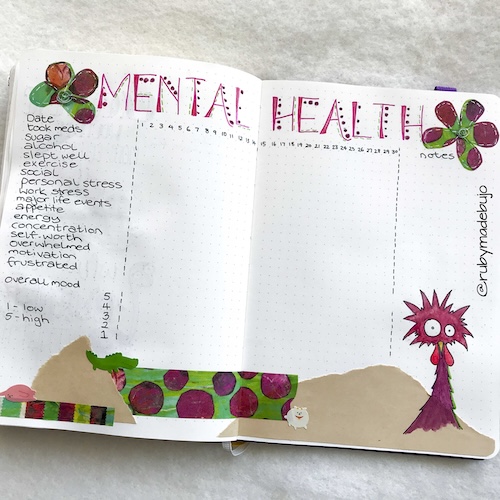I’d like to begin by being very clear that I’m not a health professional, and if you are experiencing issues with depression, I highly recommend that you seek professional help. My aim here is to share with you how I used my bullet journal and journaling in general to help me along my mental health journey. After almost a year I’m feeling so much better and I have my journal to thank for playing a large part in that.
Many would start this journey by simply recording their mood each day. Mood trackers are very popular in bullet journaling, I suspect partly because you can be so creative with the layout. Mood trackers can be useful for understanding the frequency and duration of moods and how quickly they change. Some people take it a step further by tracking various moods throughout the day.


I wanted to understand what might be triggering my daily moods, so rather than doing a straight mood tracker I developed my own checklist of triggers that I thought might be affecting me. The most obvious of those triggers for me was my medication (I have hormonal related depression). I also suspected that sugar and alcohol affected my mood, and sleep and exercise were obvious things to record, because exercise in particular is known to release endorphins and make you feel better. I then added a line for whether I had been social or not, because I wanted to see whether it improved my mood.
The last of the triggers were stressors; including personal, work and major life events, for example a death, accident, injury, or happy events like weddings or birthdays. The rest of my list was recording how I responded to the mood; tracking my level of appetite (I tend to eat more when I’m stressed), my energy levels, concentration, self-worth, how overwhelmed I felt, motivation and frustration. Some of the list was scored from 1-low to 5-high, and yes or no answers were given a tick or a cross.


Filling out these trackers for three months, taught me that I couldn’t afford to miss my tablet for more than one day if I wanted to avoid a severe dip in mood. Other significant triggers were sugar (I can easily eat a whole bag of sweets in one go so I try to avoid them), work stress and lack of sleep. Once you understand what triggers a low mood, you can then start working on ways to avoid those triggers.
For me, it was avoiding large amounts of sugar, especially when it wasn’t consumed with a meal; trying to improve my sleep patterns and get to bed earlier; ensuring I took my tablet daily; and putting some thought into how to reduce work stress. There were other steps I needed to take, so come back to see Step 2, which looks at the first phase of improving my health.


Pingback: Journaling for mental health – 2 – Baby steps – The Useful Journal